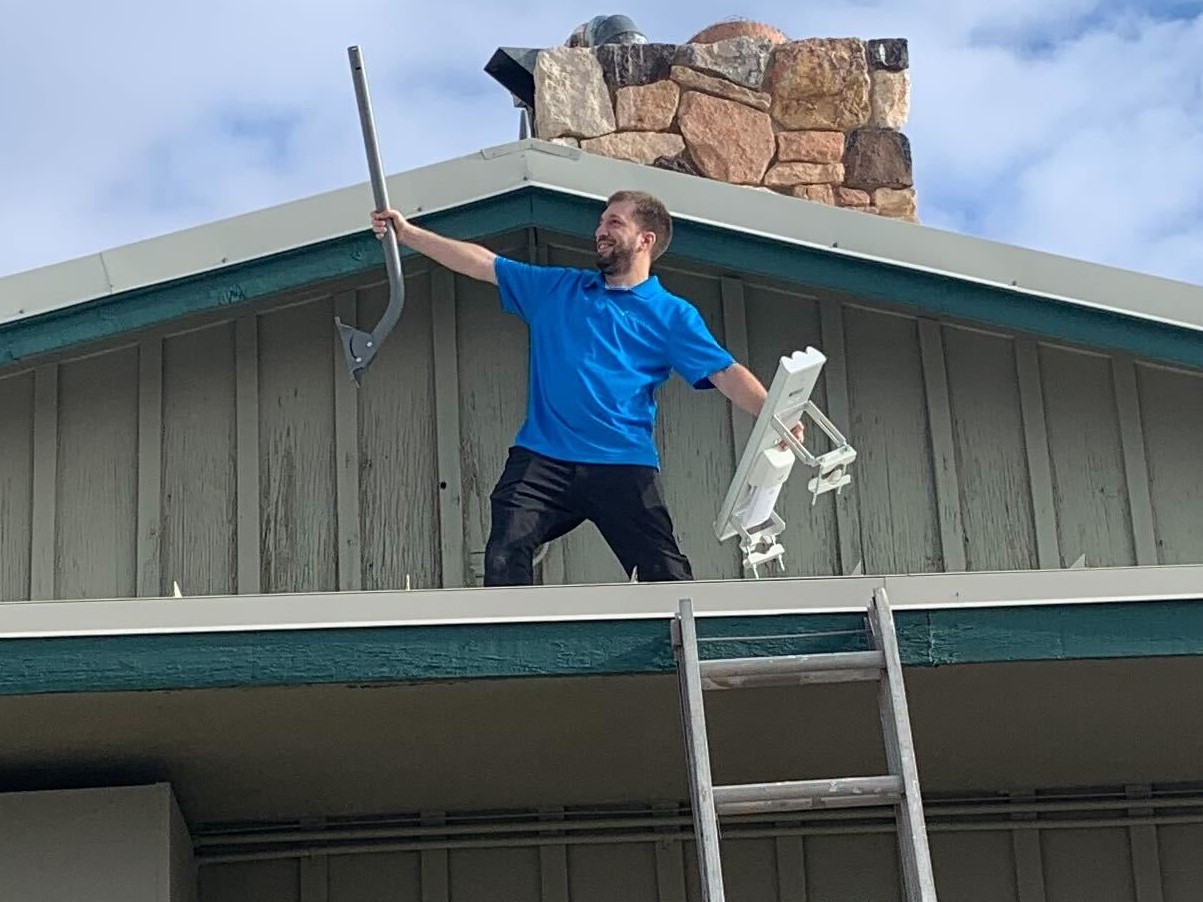Case Study: Deploying Starlink Internet in Death Valley, California

Background
Death Valley, California, is notorious for being one of the most extreme environments on Earth, with summer temperatures soaring above 120°F (49°C) and remote locations that are miles away from the nearest town. This makes it a challenging area for providing reliable internet connectivity. Traditional wired connections are nearly impossible to implement due to the vast, unpopulated expanses and the cost-prohibitive nature of infrastructure development in such terrain.
Objective
The goal was to establish a stable and reliable internet connection for a hotel, restaurant and retail store located in the heart of Death Valley, enabling seamless data transmission, communication, and access to online resources critical for the facilities operations and guests.
Evaluation and Testing
Vendor Selection
A comprehensive evaluation of various internet service providers (ISPs) was conducted, including traditional satellite internet providers, cellular data services, fiber, and emerging technologies. The primary considerations were reliability, bandwidth, latency, resistance to extreme temperatures, and the ability to provide service in remote locations.
Testing Various Options
Initial tests with traditional satellite services showed significant latency issues, while cellular data services were unreliable due to the lack of nearby cell towers. Fiber costs were far beyond the client’s budget. The extreme heat also posed a challenge to equipment, which often overheated and throttled performance or failed altogether.
The Decision: Starlink
Starlink, a satellite internet service provided by SpaceX, emerged as the most viable solution. Known for its low-latency, high-bandwidth capabilities, Starlink’s constellation of low Earth orbit (LEO) satellites promised to overcome the geographical and environmental challenges of Death Valley. Additionally, the phased array antennas and ruggedized user terminals offered the necessary durability to withstand the harsh conditions.
Implementing a Starlink Mesh Network
Planning
The implementation involved setting up a mesh network of Starlink user terminals across the facility to ensure comprehensive coverage. This required strategic placement to maximize line-of-sight with the satellites and minimize obstructions caused by the terrain and infrastructure.
Installation
Installation teams faced extreme temperatures, requiring work to be conducted during cooler hours. Special considerations were made to protect equipment from overheating, including installing shade structures and utilizing cooling systems for the network hardware.
Challenges and Solutions
- Heat: The team used insulated covers for the terminals and conducted most maintenance during cooler periods.
- Remote Nature: Given the isolation of Death Valley, ensuring a stable power supply was crucial.
- Equipment Durability: All network equipment was chosen for its high-temperature tolerance and was regularly monitored for any signs of heat damage.
Results
The Starlink mesh network provided stable, high-speed internet access across the research facility, revolutionizing the team’s ability to communicate and conduct research. The network delivered average speeds exceeding 100 Mbps, with latency well under 40 ms, supporting video conferencing, large data transfers, and real-time collaboration tools without interruption.
Conclusion
The deployment of a Starlink mesh network in Death Valley proved to be an effective solution to the challenges of providing internet service in one of the most inhospitable environments on the planet. This case study demonstrates the viability of new satellite internet technologies in overcoming the limitations of traditional infrastructure, especially in remote or extreme locations. The success of this project paves the way for similar implementations in other areas facing geographical and environmental connectivity challenges.

